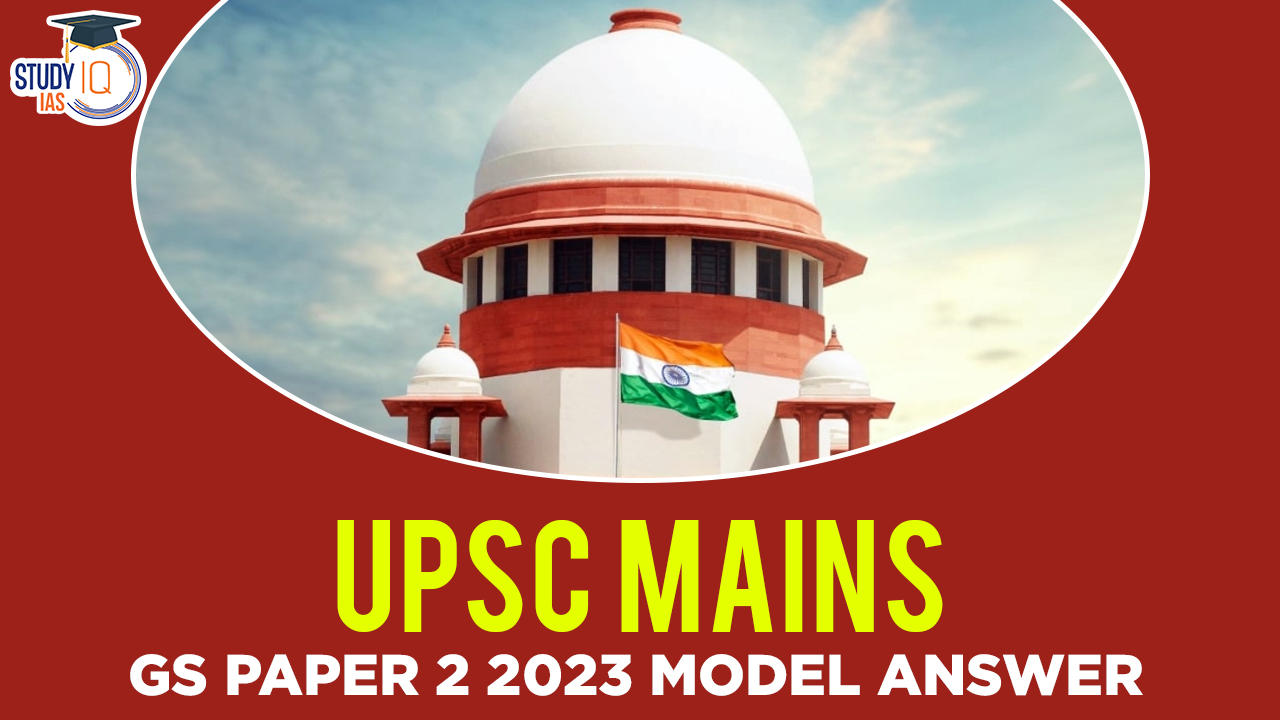Q11. ” The Construction of India is a living instrument with capabilities of enormous dynamism. It is a constitution made for a progressive society”. Illustrate with special reference to the expanding horizons of the right to life and personal liberty. (15m)
Introduction
Indian Constitution is Darwinian in structure and in practice and should be viewed not merely as law but also as a source of foundational concepts for the governing of society. This feature is accommodated under Article 368 of the Indian Constitution.
Body:
Various amendments to showcase flexibility of Indian Constitution:
- Restricting absolute freedom: through the 1st amendment act which restricted the scope of Article 19.
- Accommodating linguistic diversity: through 7th amendment Act accommodating linguistic diversity and regional aspirations.
- Making way for land reforms: through 25th amendment, which imposed restrictions on property rights.
- Panchayati Raj Institutions: through 73rd amendment act, deepening political empowerment.
- Adapting to economic changes: 101st amendment act brought GST.
Apart from this, various visionary article are present under the DPSP, which requires the Government to take steps in future as the need arrives:
- Bringing in Uniform Civil Code under Article 44.
- Article 47: To raise the level of nutrition and the standard of living of people.
- Article 48A: To protect and improve the environment and to safeguard the forests and wildlife of the country, which becomes important in the era of climate change and sustainable development.
- Free and compulsory education under Article 45– leading to the enactment of 86th Amendment Act.
With reference to the right to life and personal liberty, the Constituion of India has showed enormous dynamism and expanded the content of Article 21 through following cases:
- Maneka Gandhi Case – introduced the concept of “procedure established by law” to “due process of law,”.
- Incorporation of right to privacy in 2017 – Puttaswamy judgement – acknowledging the changing dynamics of digital society.
- Right to die with dignity: Common cause case leaglising passive euthanasia under Article 21.
- LGBTQ rights – Navtej Johar case fructified the inclusion of LGBTQ rights.
- Olga Tellis v. Bombay Municipal Corporation (1985): made right to livelihood is an integral part of the right to life.
- Subhash Kumar vs. the State of Bihar: SC included the right to get pollution-free air in the ambit of the right to life.
Conclusion:
This showcases the dynamic nature of the Indian Constitution and its ability to evolve in response to changing societal, political, and economic needs. They reflect the commitment of the Constitution to uphold democratic values, social justice, and inclusivity.
Check out the UPSC Mains GS Paper 2 2023 Analysis with detailed expatiation of the topics of Mains GS Paper 2 By the Study IQ Experts





















 WhatsApp
WhatsApp